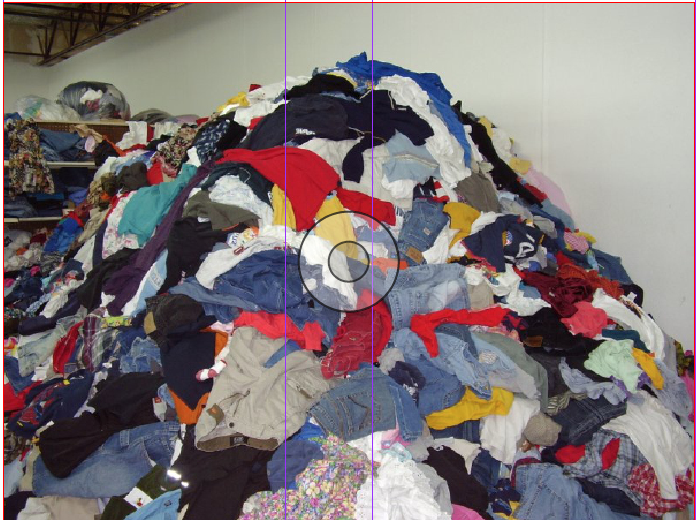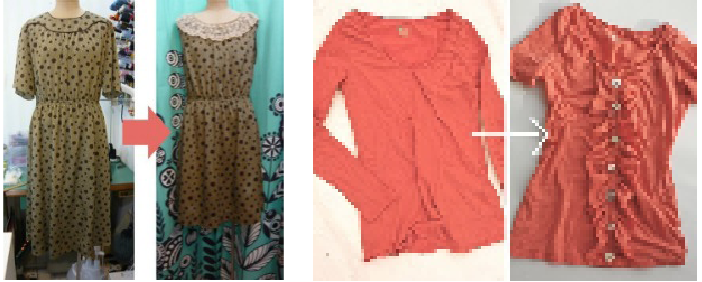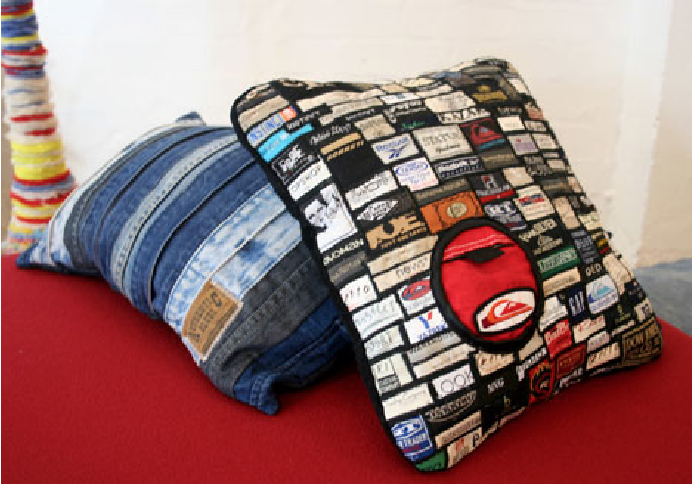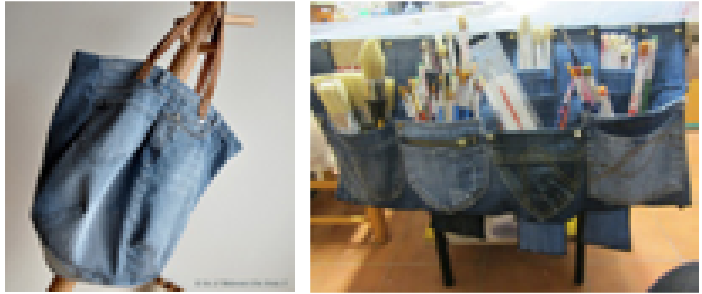Recycle Your Clothes and Fabrics

Most of us have clothes that are no longer fashionable or just don’t fit us anymore. They are just taking up space in our closets and drawers. Did you know that nearly 100 percent of those old clothes can be recycled if they are diverted through a recycling program?
Why Recycle Your Clothes?
Many of us are now in the habit of recycling other household products (plastic, paper & metal), so why not include clothing and fabrics? Recycling can give old clothes and fabrics a second life. Recycling our unused and old clothing items will help to reduce waste in landfills and energy consumption by minimizing water and gas usage. Recycling clothes also provides affordable clothing to people in need. Recycling unwanted clothing and fabrics provides both environmental and economic benefits, which is good for our communities, our nation, and the entire ecological world as a whole!
Options for Recycling Clothes
There are a variety of options for recycling unwanted, but still usable clothing and fabrics. Resale, donation, and reuse of clothing are already well-established practices in many Oklahoma communities. Here are some other options:
- Re-sell your unwanted clothing in rummage sales or to retail stores and consignment shops who accept used clothing.
- Donate your old clothes to clothing charities or textile recyclers, such as Goodwill, Salvation Army or Green Vision Recycling LLC (based outside Tulsa, OK).
- Pass your unused clothes on to someone you know who can use them—a cousin, brother, sister, friend, etc.
- Redesign: change your old-fashioned clothing into trendy clothes, bags, or accessories, to prolong the life of your once precious clothing. It is fun and easy!

- Change your old clothing into other styles, for example: cut your long jeans into shorts; cut your long conservative skirt into a short and more fashionable one; change the collar and sleeves.
- The possibilities are endless! Turn an old shirt into an apron; an old warm winter
sweater into a few pairs of winter gloves; a silk skirt into a scarf; a tie into a
wallet. If the fabric is soft and comfortable, you may even turn old adult clothing
into a skirt, shirt or pants for kids.


- Cut old clothes into little squares or other shapes and make a quilt, pillow, bag, curtain, or even toys (such as doll).
- Some old clothing is simply beyond repair and is not suitable to wear ever again. For old clothing which cannot be used for any of the ideas above, there are alternatives! If the fabrics are highly absorbent and comfortable, such as cotton and rayon, you can cut such clothes up and use them as rags, baby diapers, or even handkerchiefs.

Alternatives to Clothing Over-Consumption
- Consider renting clothing for one-time events. For example, rent special items for Halloween parties or clothing that is otherwise too expensive, such as for weddings or formal gatherings.
- Consider swapping clothes with friends or family members to prolong their lifespan.
- Consider shopping at resale stores (e.g. Goodwill) to find your favorite clothing. These stores sometimes carry unique and hard to find fashions which just might be the perfect piece for the outfit you are trying to find!
- Be creative, learn to mix and match existing clothing to follow fashion trends. For example, use different accessories, such as scarf, necklace, belt, which might help create a new style with the same old dress just hanging in the closet that hasn’t been worn for ages.
- Consider what you have in your closet before making the decision to buy new items so they can be easily matched with clothing you already own.
Clothing and fabrics play an important role in environmental sustainability. Recycling and reusing old clothing may contribute greatly to a better and more healthy environment, not only for today, but for future generations as well. Please join us as we make a commitment to save the environment by recycling unwanted, but still usable clothing!
References
Hawley, J.M. (2006). Digging for diamond: A conceptual framework for understanding reclaimed textile products. Clothing and Textile Research Journal, 24(3), 262-275.
LeBlanc, R. (2013). About textile recycling: Growth of textile recycling promises to divert more material from landfills. Retrieved November 10th, 2013, from http://recycling.about.com/od/Glossary/a/About-Textile-Recycling.htm
Textile Exchange. (2012). Retrieved August 10th, 2012.
Credit for Images
http://ecokvetch.blogspot.com/2010/10/textile-recycling.html
http://blancoron.com/ENG/
http://www.core77.com/gallery/london-design-festival-2005/16.asp
http://www.pinterest.com/pin/271130840038505296/
http://pinterest.com/pin/76842737363828369/
http://pinterest.com/pin/76842737363828380/
http://www.pinterest.com/pin/57491332716473743/
Mary Ruppert-Stroescu, Ph. D.
Apparel Design and Textile Extension Specialist
Chunmin Lang
Graduate Student, College of Human Sciences
